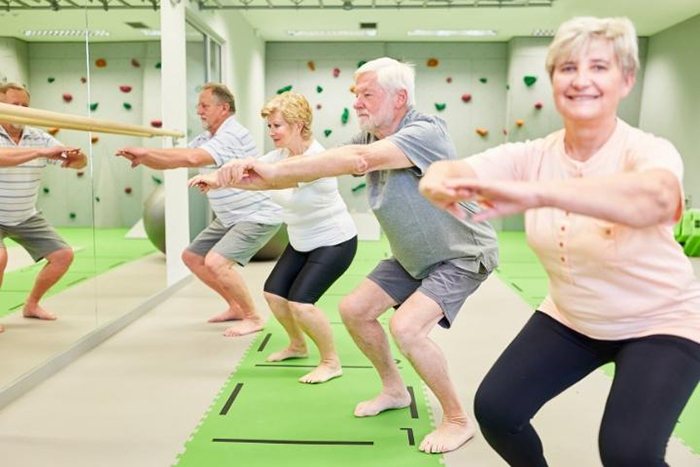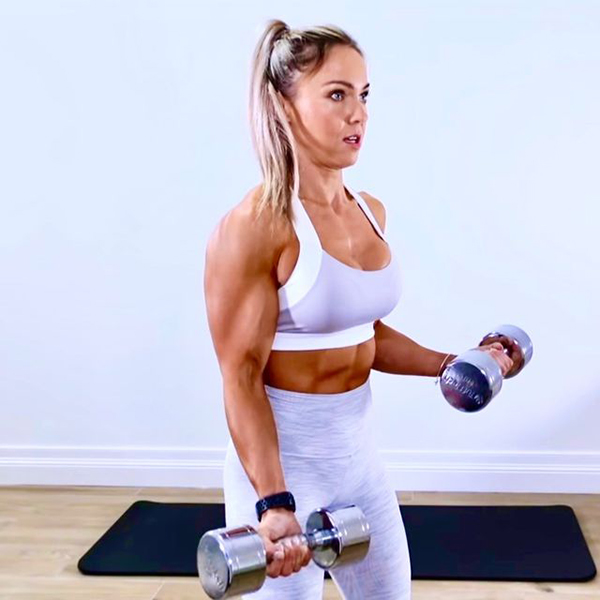Thinking of resting today and starting tomorrow? Well, the idea may seem appealing, especially if you are young; however, things do take a turn when you cross 50, as it becomes a choice between using it or losing it. The phrase refers to using your bones, muscles, brain, and heart to decide how you want to spend the remainder of your life. As soon as you grow old, crippling illnesses like hypertension and osteoarthritis will knock at your door, impacting your quality of life. Though these illnesses affect your body differently, it doesn't mean there is no way to them.
Physical activity or exercise might not turn back the clock but adds a couple of years to your life. With age, our body goes through changes that demand we make changes to live a healthy lifestyle and prevent illnesses. Besides a nutritious diet, exercise plays a significant role in preventing health issues that arise with age. However, not all forms of exercise are deemed fit in old age, but there is nothing quite like a session of strength training, especially for women over 50. How? Let's look into the dynamics.
As time goes by, our body gradually starts losing muscle mass, becoming more pronounced after age 50. Though it is inevitable,strength training helps build muscle mass, promoting an independent lifestyle even in advanced years. As you gain muscle mass, your body's metabolism also speeds up, fat vigorously and creating a leaner .
We invite you to check out these stretching exercises for women over 50 and reap the benefits of exercising.

Staring with squats is a great way to increase muscle strength, gradually decreasing with age. When performing squats, the muscles targeted are the quadriceps, hamstrings, core, and lower back which play their part in strength building.
Unlike other forms of exercise, squats activate every muscle group in the body responsible for developing strength.
Loss of balance is one of the major downfalls of aging, but as you perform squats, your core is activated, improving mobility and balance.
Since most of our in old age result from weak joints and ligaments surrounding them, squatting strengthens the joint and the associated structures, reducing the risk of .
Performing squats isn't difficult; all you have to do is stand tall, feet apart, with your , knees, and toes pointing forward.
Bend your knees at 90 degreeswhile maintaining an equal weight in both the heels. Gradually lower your body in a squat position with your chest and shoulders back, hold this position for a few minutes, then rise to stand and repeat the exercise.
One of the concerns for older people is the risk of falling, which leads to and makes them dependent on others for carrying out day-to-day tasks.
Standing calf raises increases ankle strength which helps the ankle withstand load andperform movements.
Elders usuallyrisk falling primarily due to knee issues and poor balance, resulting from a lack of strength in the calves and ankles.
Performing standing calf raises strengthens the calve and ankle muscles, increasing the ability to carry out strength-based movements and reducing the risk of falls.
Older individuals who do standing calf raises are better at carrying out tasks of daily living and leading an independent lifestyle.
You can do this exercise by standing on a yoga mat with your chest and shoulders straight, feet width apart, and toes pointing straight ahead.
Slowly rise on your heels to the point you are standing on your toes without bending your knees.
Hold this position for a few seconds, gradually bringing your heel towards the ground and finally standing straight.
If your balance wavers during the exercise, hold onto a chair or place your hand on the wall.

Bicep exercises are often associated with bulking up or bodybuilding, which is not true, especially for women, due to a lack of required for massive muscle gain. There are many bicep exercises, including the biceps hammer curl.
In old age, loss of muscle mass is seen in the upper arms that appear small and weak, making it challenging to carry objects safely.
Doing bicep hammer curls targets the arm muscles, strengthening them to support your elbows and shoulder during push and pull activity.
Though hammer curls are performed with dumbbells, variations can be added by using bands. In old age, having strong arm muscles helps carry out tasks related to lifting heavy objects and performing various arm-based movements.
Start with standing straight with your knees aligned. Hold dumbbells in each of your hands on the side while keeping your arms straight. Slowly bend your lower arm to bring the weight towards the shoulder.
Do not move your upper arms; keep them aligned with your body. Hold this position for a few seconds, keeping your muscles activated, then bring your lower arms back to the starting position.
Like all the other muscles, pectoral muscles also lose their strength with age, making it difficult to fulfill daily tasks. The seated chest press exercise targets the chest muscles while recruiting the biceps, shoulders, and back muscles.
It is also a variation of the lying bench press and is great for building upper body strength. Performing a machine-assisted chest press is beneficial because it prevents errors in maintaining correct body alignment during the exercise.
As a beginner, you can always start by adding a few modifications to the exercise to make it easier.
Start with no weight, then gradually add small weight ratios as you learn to perform the exercise in the correct form until the added weight reaches the required number.
Keep in mind to add weight only after you have developed muscle strength.
If you grow tired of performing the same routine, you can add different equipment like a pair of dumbbells, a barbell, or a cable machine. Each piece of equipment has distinct action, making the exercise a little more interesting.
The risk of is high when you hyperextend the shoulder while holding onto even a moderate weight, directly putting the shoulder under a load. Ensure you do not pull your elbows so far back that theyhyperextend your shoulders.
With age, your body goes through changes that impact the quality of your life, rendering you incapable of doing even the smallest of chores. However, regular physical activity helps older individuals remain fit, especially strength training.
Besides physical benefits, strength training helps relieve emotional distress, a common occurrence in women over 50 due to menopause.
Suppose aerobic exercise and balance training is already a part of your daily regime; in that case, it is never too late to add strength training since it will strengthen your muscles to perform other exercises.
Common strength training exercises include seated chest press and bicep hammer curl, which help build muscle strength and prevent health problems.
Be the first to post comment!